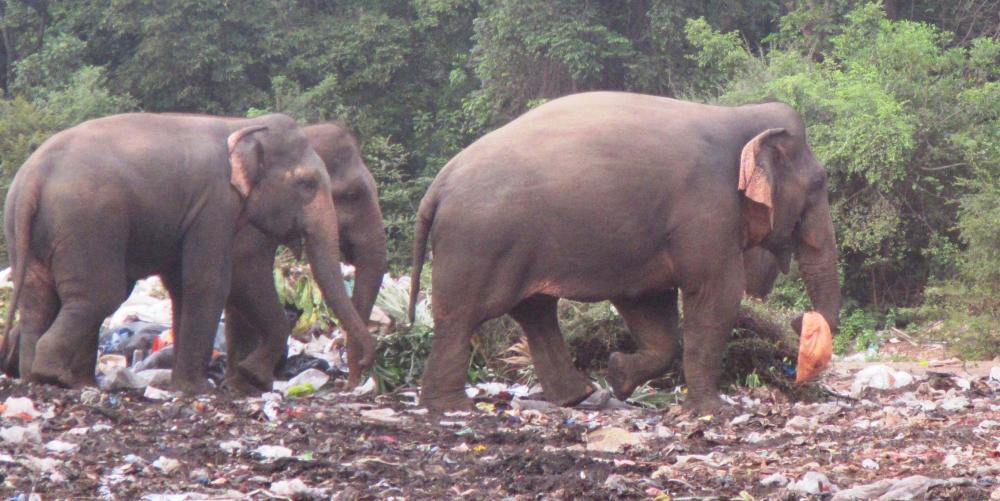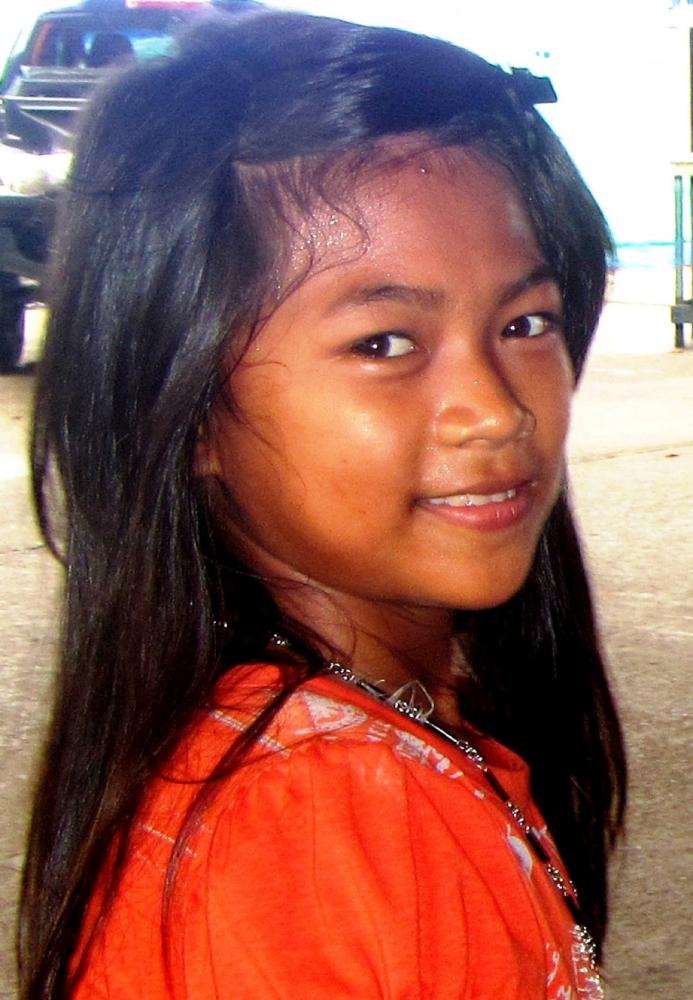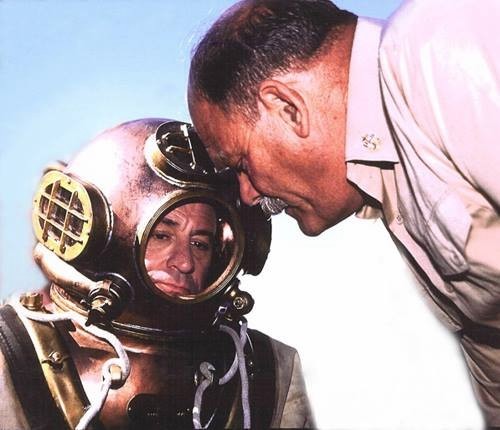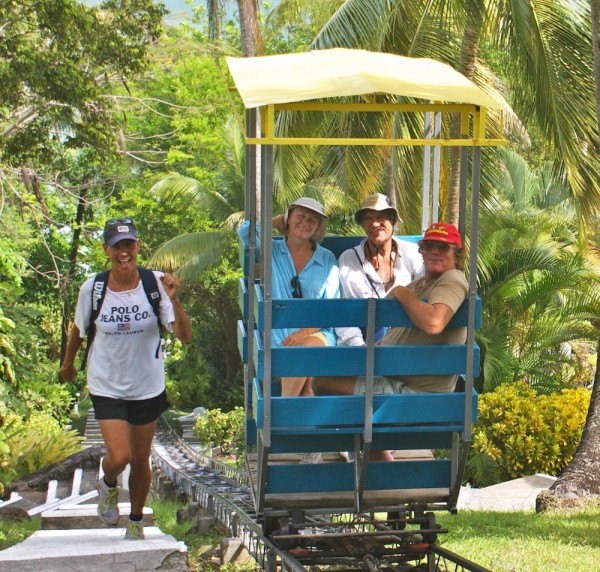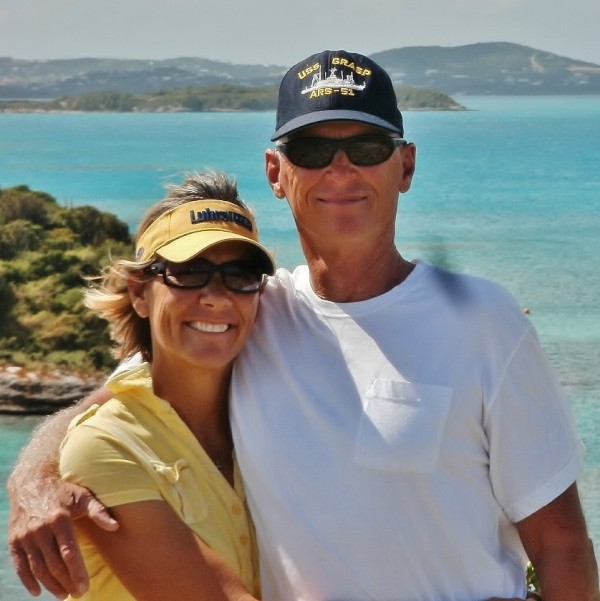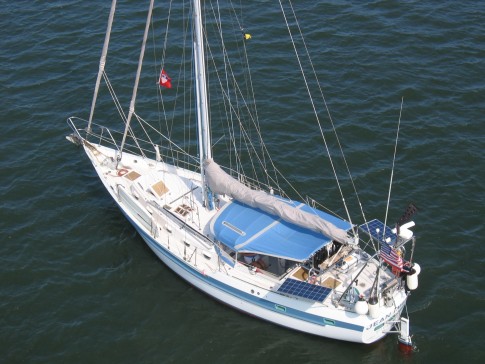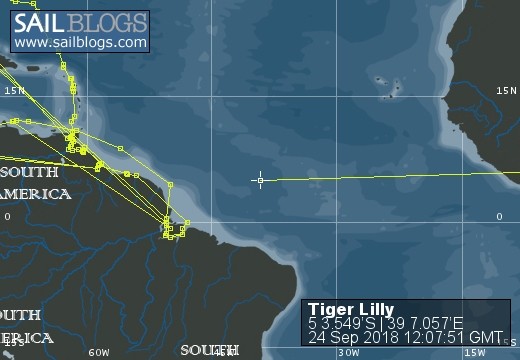
S/V Tiger Lilly
Rig heavy, reef early, and pray often; for God does not assure us an easy passage, but He does promise a safe anchorage...
25 May 2018 | TRINCOMALEE, SRI LANKA
02 January 2018 | Clan Jeti Anchorage, Georgetown, Penang Island, Malaysia
03 November 2016 | Singapore, Southeast Asia
02 October 2016 | Kumai River, Borneo
24 August 2016 | Rindja Island, Indonesia
22 July 2016 | Fannie Bay, Darwin, Northern Territory, Australia
14 June 2016 | Pancake Creek, Queensland, Australia
13 June 2016 | Pancake Creek, Queensland, Australia
11 June 2016 | Burnette Heads, Queensland, Australia
07 June 2016 | Mooloolaba, Queensland, Australia
11 May 2016 | Colmsie, Brisbane River, Queensland, Australia
23 December 2015 | Brisbane, Australia
13 August 2015 | Whangarei, New Zealand
07 August 2015 | Whangarei, New Zealand
23 July 2015 | Whangarei, New Zealand
12 April 2015 | Whangarei, New Zealand
11 February 2015 | Whangarei, New Zealand
25 January 2015 | Whangarei, New Zealand
24 September 2014 | BORA BORA, French Polynesia
23 September 2014 | Bora Bora
TIGER LILLY - DRAGONS LIVE HERE!
24 August 2016 | Rindja Island, Indonesia
Tom & Lilly
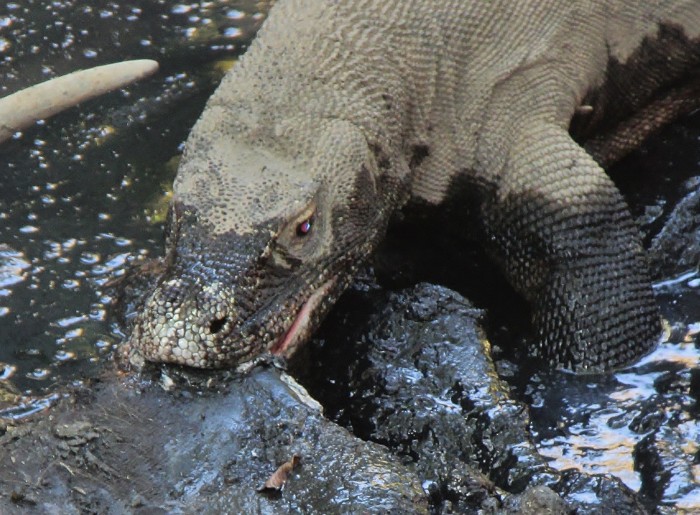
The soft light of dawn bathed the cloven hills of Rindja Island in an amber glow as we picked our way through large lava boulders in a deep ravine. A remnant of the cool night breeze drifted down the hillside, and we followed our guide Sofina with attentiveness, and a subliminal expectation of adventure. We were here to see the Komodo Dragons; but these bolder-strewn hills, covered in a course, thick, thigh-high grass, are the habitat of a few other nasties as well. Javan spitting cobras favor the grassy knolls and wooded ravines. Emerald tree vipers tend to drape themselves on tree limbs; and the green death awaits the inattentive bush bird (or yachtie) who ventures too close. The bad-tempered white-lipped pit vipers, hopeful that a young Macaque monkey will scamper into striking range, lie in ambush amongst the grey boulders.
We were like fish out of water in this harsh and unforgiving environment, and our primary defense is Sofina's watchful eye and keen bush sense. (Poppa, Mum, stay close please.) He carries a well-worn two meter long forked stick to push against the shoulder of an aggressive dragon. Sofina, nearly toothless from a lifetime of chewing betel nut, told us before we left the Ranger Station that the Dragons have very poor eye sight, and their primary sensing organ is their long, forked tongue. Our guide, and protector, who has spent all of his 41 years living amongst the Dragons, thinks that as he presses the forked tongue-like stick against the shoulder of one of these huge reptiles that they sense that a really big Dragon must be attached to it, so they back off. That's the theory anyway: walk softly, but carry a big tongue! Visualize this: the only thing between you and hundreds of kilograms of bacteria-laden razor-toothed carnivorous lizard is a slight quiet-spoken man, whom you have just met, with a theory on animal behavior - and a 20mm diameter stick in his hand. Now that's an example of faith...
As we diverted from the ravine and entered a dried creek bed, quite suddenly the sweet aroma of the dew-laden grass was displaced by the unmistakeable smell of death. It hung like a pall over the tropical scrub-bush. We had already seen the young "house lizards" which skirted the periphery of the ranger's quarters in anticipation of a hand-out; but we were eager to come into the presence of a full grown Komodo Dragon in his natural environment. As we stood atop a large bolder and peered down into a putrid depression of muck and black slime, just a few meters away a young "teenage" Dragon was ripping the decaying flesh off a very ripe water buffalo carcass. The stench was quite powerful, but we stood in awe and watched this holdover from the age of the dinosaurs tug and claw, rip and gulp, and utter deep guttural hissing epitaphs at the human invaders to his kingdom. The young Dragon occasionally stopped his feast to raise his head and "taste" us with his long pink forked tongue, and then returned to stripping the tough hide from the water buffalo. We were mesmerized buy the power of this young fellow. Nearly defenseless, we became very much aware that in this place we no longer enjoyed a perch at the top of the food chain; we were clearly on the menu...
Sofina told us in his broken English that old or sick buffalo will seek whatever water is available - and the Dragons instinctively know they are in a weakened state. (An obviously intelligent person, he had to communicate in his self-taught English, as we cannot speak Indonesian.) Our young Dragon seemed to assess the tall, bald, Sailor Man peering at him from atop the boulder. Perhaps that hitch in the old man's gate as he moved amongst the rocks foretold of a day - not far off - when he too would be ready to be taken... We watched for several minutes - this is exactly what we came to see; we wanted to experience the sight, sound, and smell of this wonder of the natural world. Just before we reluctantly departed, we noticed that the young Dragon seemed preoccupied, and was lifting his head and sensing the air behind us. Sofina told us that we must be very careful as we worked our way back along the creek bed; it is common for several Dragons to feed off a single carcass. If a Dragon comes down the narrow steep-sided creek bed, the traffic is only going one-way - his way! Sure enough, we were just out of the creek bed, and no more than perhaps 50 meters up the ravine, when we met the Grand-Daddy Dragon heading right for us on the trail - and we were between him and his next meal. Crossing his bow was not a good option, and after a bit of scrambling, we gave way and took up station on his starboard quarter; we would follow at a respectful distance and see how the situation played-out between Grand-Daddy and the Teenager.
By the time we had retraced our steps and returned to the buffalo carcass, the Teenager was making his exit and cresting the creek bank; only to have been replaced by a third Dragon, a mature adult, and he was now in sole possession of the buffalo. With his blunt head buried in the bloated abdominal cavity, his powerful legs and splayed claws anchored the heaving carcass as he ripped flesh and crushed bone. We watched in anticipation as Grand-Daddy approached the just slightly smaller adult Dragon. Safina was now keeping us well back; he warned that if the Dragons decide to settle this with a fight, they are capable of moving very fast for short distances, and there was no-telling what exit route the vanquished may take. The two bulky adversaries were head-to-head and shoulder-to-shoulder on top of the disputed buffalo carcass as they sized-up each other. They were braced-up on their powerful forefeet with splayed claws ready to do battle in an instant. However, after a bit of head shoving and grunting, they somehow came to the mutual decision that Grand-Daddy would take his meal later; and he ambled off, down the creek bed to his nap in the morning sun.
There is plenty to do and see at the Komodo National Park, a designated United Nations World Heritage Site. We anchored TIGER LILLY at five different places at Rindja and Komodo Islands - with each one prettier then the last. Rather than making day trips from Labuan Badjo, Flores, as do the tourists, like a turtle, we brought our home to the park and lived here day and night. By being here around the clock we had the opportunity to see Asian red deer, large flocks of bats, huge manta rays, brilliant blue backed kingfishers, sea turtles, Macaque monkeys, spinner dolphin, wild water buffalo, beautiful coral reefs for snorkeling, wild boar on the beach, and of course the iconic Komodo Dragons themselves.
LILLY sez: OH MY GOSH - we loved visiting Komodo National Park and seeing the Dragons! We hope that our experience has wetted your appetite for learning more about Indonesia - there is so much to see, and so many new things to learn here. For an enjoyable read, and lots of insightful information about this area of Southeast Asia, pick up a copy of Lawrence Blair's excellent book "RING OF FIRE". He and his brother Lorne spent years travelling extensively through Indonesia, living with the native people, and learning the ancient ways of these exotic islands. These modern-day adventurers cum academics lived with cannibals in the western mangroves of Irian Jaya, sailed with the Makassar Pirates of Celebes, made the first underwater films of the famed Banda Sea pearl divers, and delved into the spiritual nature of the Hindu Mystics of Bali. Their work was also the subject of a PBS video documentary of the same name. We enthusiastically recommend "RING OF FIRE" - this book has certainly brought an added dimension to TIGER LILLY's cruise through the Indonesian Archipelago.
We hope that one day you will have the opportunity to come and see this amazing place for yourself...
Warm regards,
Tom & Lilly
S/V Tiger Lilly
Gilli Banda, Indonesia
We were like fish out of water in this harsh and unforgiving environment, and our primary defense is Sofina's watchful eye and keen bush sense. (Poppa, Mum, stay close please.) He carries a well-worn two meter long forked stick to push against the shoulder of an aggressive dragon. Sofina, nearly toothless from a lifetime of chewing betel nut, told us before we left the Ranger Station that the Dragons have very poor eye sight, and their primary sensing organ is their long, forked tongue. Our guide, and protector, who has spent all of his 41 years living amongst the Dragons, thinks that as he presses the forked tongue-like stick against the shoulder of one of these huge reptiles that they sense that a really big Dragon must be attached to it, so they back off. That's the theory anyway: walk softly, but carry a big tongue! Visualize this: the only thing between you and hundreds of kilograms of bacteria-laden razor-toothed carnivorous lizard is a slight quiet-spoken man, whom you have just met, with a theory on animal behavior - and a 20mm diameter stick in his hand. Now that's an example of faith...
As we diverted from the ravine and entered a dried creek bed, quite suddenly the sweet aroma of the dew-laden grass was displaced by the unmistakeable smell of death. It hung like a pall over the tropical scrub-bush. We had already seen the young "house lizards" which skirted the periphery of the ranger's quarters in anticipation of a hand-out; but we were eager to come into the presence of a full grown Komodo Dragon in his natural environment. As we stood atop a large bolder and peered down into a putrid depression of muck and black slime, just a few meters away a young "teenage" Dragon was ripping the decaying flesh off a very ripe water buffalo carcass. The stench was quite powerful, but we stood in awe and watched this holdover from the age of the dinosaurs tug and claw, rip and gulp, and utter deep guttural hissing epitaphs at the human invaders to his kingdom. The young Dragon occasionally stopped his feast to raise his head and "taste" us with his long pink forked tongue, and then returned to stripping the tough hide from the water buffalo. We were mesmerized buy the power of this young fellow. Nearly defenseless, we became very much aware that in this place we no longer enjoyed a perch at the top of the food chain; we were clearly on the menu...
Sofina told us in his broken English that old or sick buffalo will seek whatever water is available - and the Dragons instinctively know they are in a weakened state. (An obviously intelligent person, he had to communicate in his self-taught English, as we cannot speak Indonesian.) Our young Dragon seemed to assess the tall, bald, Sailor Man peering at him from atop the boulder. Perhaps that hitch in the old man's gate as he moved amongst the rocks foretold of a day - not far off - when he too would be ready to be taken... We watched for several minutes - this is exactly what we came to see; we wanted to experience the sight, sound, and smell of this wonder of the natural world. Just before we reluctantly departed, we noticed that the young Dragon seemed preoccupied, and was lifting his head and sensing the air behind us. Sofina told us that we must be very careful as we worked our way back along the creek bed; it is common for several Dragons to feed off a single carcass. If a Dragon comes down the narrow steep-sided creek bed, the traffic is only going one-way - his way! Sure enough, we were just out of the creek bed, and no more than perhaps 50 meters up the ravine, when we met the Grand-Daddy Dragon heading right for us on the trail - and we were between him and his next meal. Crossing his bow was not a good option, and after a bit of scrambling, we gave way and took up station on his starboard quarter; we would follow at a respectful distance and see how the situation played-out between Grand-Daddy and the Teenager.
By the time we had retraced our steps and returned to the buffalo carcass, the Teenager was making his exit and cresting the creek bank; only to have been replaced by a third Dragon, a mature adult, and he was now in sole possession of the buffalo. With his blunt head buried in the bloated abdominal cavity, his powerful legs and splayed claws anchored the heaving carcass as he ripped flesh and crushed bone. We watched in anticipation as Grand-Daddy approached the just slightly smaller adult Dragon. Safina was now keeping us well back; he warned that if the Dragons decide to settle this with a fight, they are capable of moving very fast for short distances, and there was no-telling what exit route the vanquished may take. The two bulky adversaries were head-to-head and shoulder-to-shoulder on top of the disputed buffalo carcass as they sized-up each other. They were braced-up on their powerful forefeet with splayed claws ready to do battle in an instant. However, after a bit of head shoving and grunting, they somehow came to the mutual decision that Grand-Daddy would take his meal later; and he ambled off, down the creek bed to his nap in the morning sun.
There is plenty to do and see at the Komodo National Park, a designated United Nations World Heritage Site. We anchored TIGER LILLY at five different places at Rindja and Komodo Islands - with each one prettier then the last. Rather than making day trips from Labuan Badjo, Flores, as do the tourists, like a turtle, we brought our home to the park and lived here day and night. By being here around the clock we had the opportunity to see Asian red deer, large flocks of bats, huge manta rays, brilliant blue backed kingfishers, sea turtles, Macaque monkeys, spinner dolphin, wild water buffalo, beautiful coral reefs for snorkeling, wild boar on the beach, and of course the iconic Komodo Dragons themselves.
LILLY sez: OH MY GOSH - we loved visiting Komodo National Park and seeing the Dragons! We hope that our experience has wetted your appetite for learning more about Indonesia - there is so much to see, and so many new things to learn here. For an enjoyable read, and lots of insightful information about this area of Southeast Asia, pick up a copy of Lawrence Blair's excellent book "RING OF FIRE". He and his brother Lorne spent years travelling extensively through Indonesia, living with the native people, and learning the ancient ways of these exotic islands. These modern-day adventurers cum academics lived with cannibals in the western mangroves of Irian Jaya, sailed with the Makassar Pirates of Celebes, made the first underwater films of the famed Banda Sea pearl divers, and delved into the spiritual nature of the Hindu Mystics of Bali. Their work was also the subject of a PBS video documentary of the same name. We enthusiastically recommend "RING OF FIRE" - this book has certainly brought an added dimension to TIGER LILLY's cruise through the Indonesian Archipelago.
We hope that one day you will have the opportunity to come and see this amazing place for yourself...
Warm regards,
Tom & Lilly
S/V Tiger Lilly
Gilli Banda, Indonesia
Comments
| Vessel Name: | Tiger Lilly |
| Vessel Make/Model: | 1977 CSY44 walkover hull #55 |
| Hailing Port: | Green Cove Springs |
| Crew: | Lilly and Tom Service |
| About: | |
| Extra: | |
| Social: |
Tiger Lilly's Photos - Main
S/V Tiger Lilly
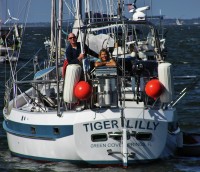
Who: Lilly and Tom Service
Port: Green Cove Springs

